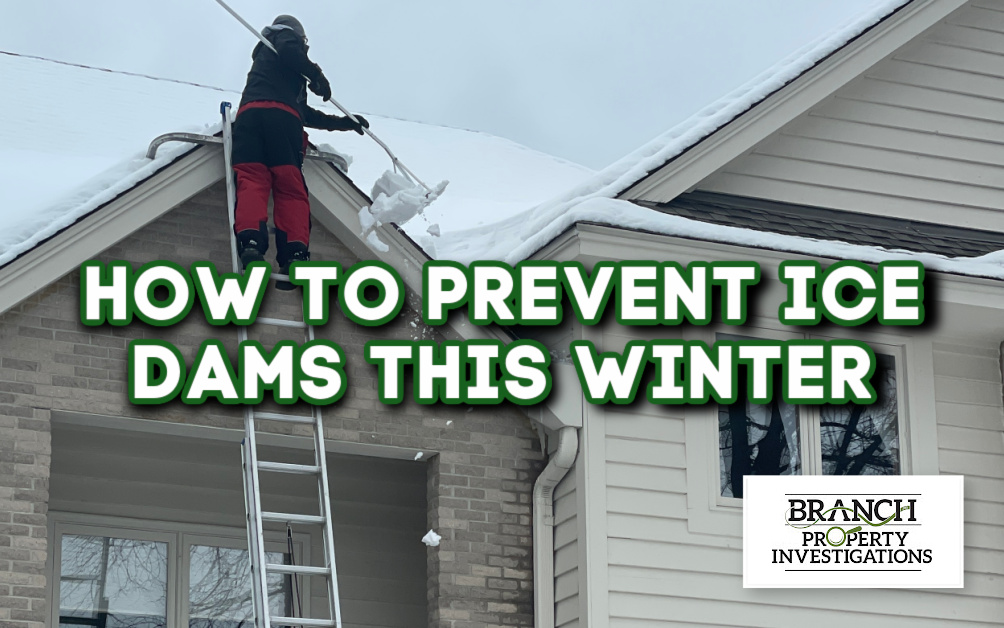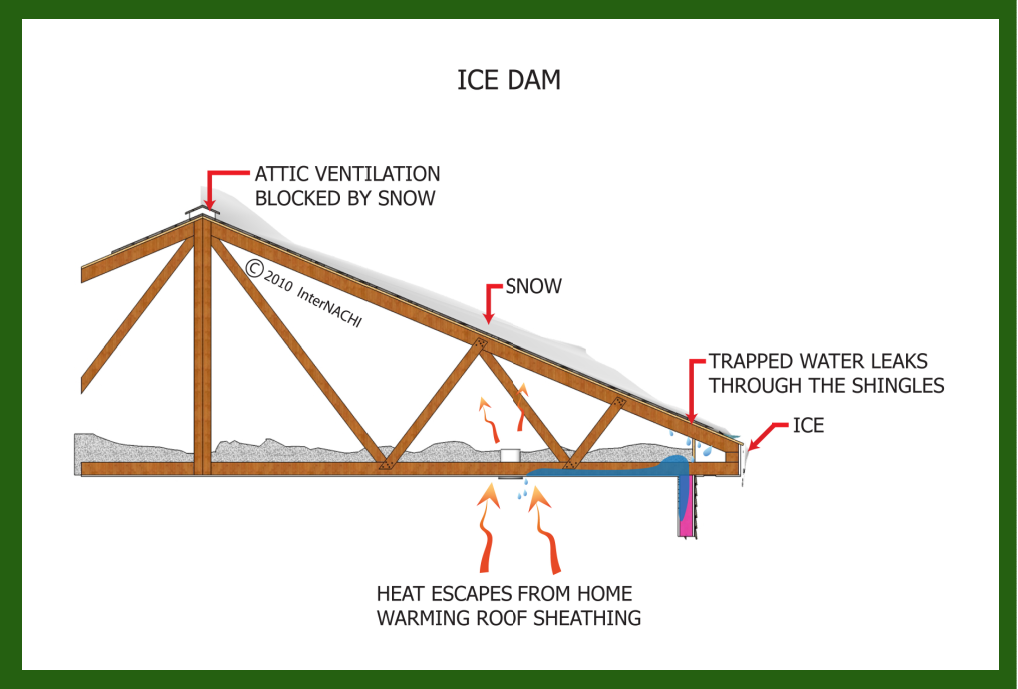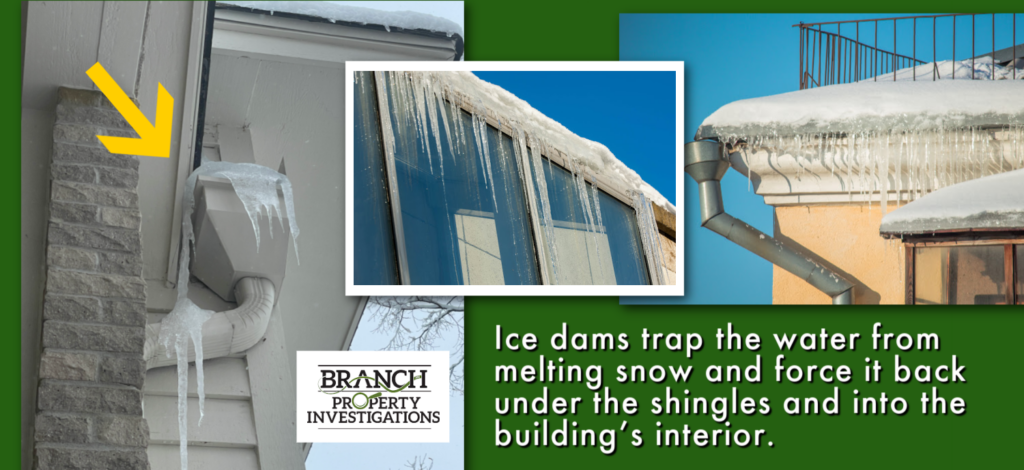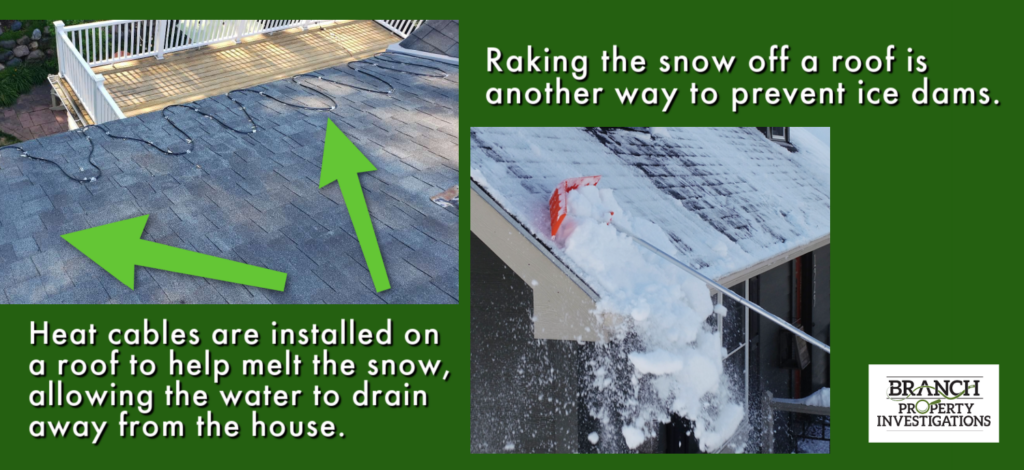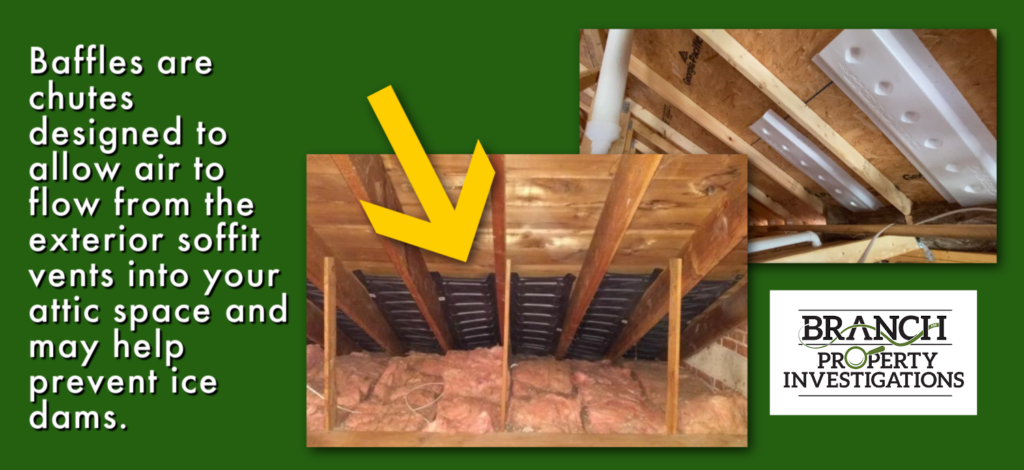Although we’ve had a slow start to winter in Minnesota, surely more snow is coming! A large build-up of snowfall on roofs will wreak havoc for many homeowners by creating ice dams. Today we’ll explain how ice dams form and what you can do help prevent ice dams on your own roof.
How Do Ice Dams Form?
Ice dams typically form on pitched-roof overhangs in cold climates. Heat loss through the roof and heat from the sun (even in freezing temperatures) can cause snow on a roof to melt. As water runs down the roof onto the overhang, it freezes and forms an ice dam just above the gutter. The ice dam traps water from melting snow and forces it back under the shingles and into the building’s interior.
How Can I Recognize an Ice Dam?
You can watch your roof overhang or gutter collection boxes for evidence of ice build-up and look at the eaves and soffit for evidence of deterioration and water damage. If the house has an attic, the underside of the roof deck at the exterior walls can be checked for signs of water intrusion.
How Do I Prevent an Ice Dam?
Control Your Home’s Temperature
The key to preventing ice dams is simply to keep your attic and roof cold. After a snowfall, a cold roof will have a thick blanket of snow. A warmer roof, however, will soon have clear spots where the snow has melted off, and may well have icicles hanging from the eaves.
Rake Your Roof After Each Heavy Snowfall
Ensuring that the snow on your roof is clear after heavy snowfall is also a great way to prevent ice dams from forming. You can buy a roof rake, which is just an especially long-handled rake, that allows you to remove excess snow and protect your roof. Be careful not scratch or gouge your shingles during snow removal.
Install Heat Cables
Heat cables are an electric heating cord typically installed along the edge of a roofline and through the gutter. Heat cables’ primary purpose is to warm the snow, creating the opportunity for it to melt and drain away from the home.
Check Your Attic Insulation
Many home attics in Minnesota have some insulation; most can benefit by adding more attic insulation. The code minimum is R-49 insulation and should provide a good barrier to heat loss. To determine the present R-value of your attic, you can schedule an energy assessment.
Close Up Attic Bypasses
Sealing attic bypasses will also help to reduce energy bills and help with the comfort of your home. In reality, the biggest source of heat loss is through the attic, and the best return on investment is usually accomplished through air sealing and re-insulating the attic.
Add Roof and Soffit Vents
Roof vents allow airflow through your attic or roof space, helping balance temperatures and preventing moisture build-up. In the hot summer months, they enable hot air to escape, reducing the strain on your air conditioning system, while in the colder months, they prevent ice dams and mitigate the risk of mold and mildew growth. This ventilation process ultimately protects your roof and your home’s interior.
Add Attic Baffles
Baffles are chutes designed to allow air to flow from the exterior soffit vents into your attic space. They are typically made from materials such as cardboard, rigid foam board, or polyvinyl chloride. These insulation baffles can be easily obtained from most home-improvement stores and installed using just a few staples, making them suitable for a DIY approach.
How Do I Remove an Ice Dam?
Ice dam removal is a royal pain, so it’s ideal to prevent them from forming in the first place. If you do end up with an ice dam, we recommend hiring an experienced professional to help with removal. Gentle steam is the best way to get rid of the ice without damaging your roof. Stay clear of companies that use a pressure washer or a hammer to remove ice!
Ask if the company’s steamer has varying settings. High-pressure steam in the hands of a rookie can cost you money in roof repairs. Low-pressure steam can cost you money in excessive billable hours. Only an adjustable steamer in the hands of a pro can help you avoid those problems.
Will My Home Inspector Identify Ice Dams?
Ice dams are complicated to identify outside of the winter season. During the winter months, if you are considering buying a home with snow across a roof, a home inspector will be able to notice if there are spotty areas where the snow has melted, or whether there are hanging icicles, which point to possible ice dams. During warmer months, it is very difficult to identify if ice dams have previously occurred. Water stains are the best clue that previous damage has occurred from ice dams.
If you are in need of a home inspection this winter, we’d love to help! Please call our office at (612) 440-8466 or click to Schedule Online.


